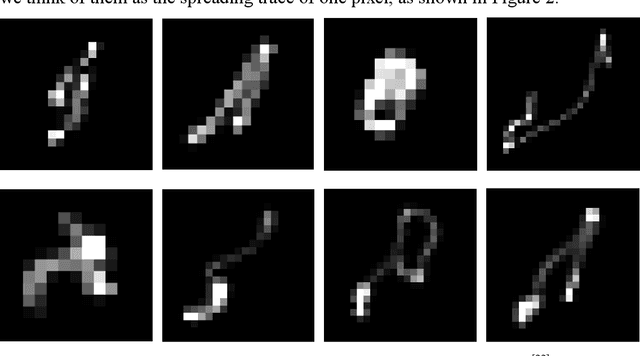Yuhong Lu
RLBind: Adversarial-Invariant Cross-Modal Alignment for Unified Robust Embeddings
Sep 17, 2025Abstract:Unified multi-modal encoders that bind vision, audio, and other sensors into a shared embedding space are attractive building blocks for robot perception and decision-making. However, on-robot deployment exposes the vision branch to adversarial and natural corruptions, making robustness a prerequisite for safety. Prior defenses typically align clean and adversarial features within CLIP-style encoders and overlook broader cross-modal correspondence, yielding modest gains and often degrading zero-shot transfer. We introduce RLBind, a two-stage adversarial-invariant cross-modal alignment framework for robust unified embeddings. Stage 1 performs unsupervised fine-tuning on clean-adversarial pairs to harden the visual encoder. Stage 2 leverages cross-modal correspondence by minimizing the discrepancy between clean/adversarial features and a text anchor, while enforcing class-wise distributional alignment across modalities. Extensive experiments on Image, Audio, Thermal, and Video data show that RLBind consistently outperforms the LanguageBind backbone and standard fine-tuning baselines in both clean accuracy and norm-bounded adversarial robustness. By improving resilience without sacrificing generalization, RLBind provides a practical path toward safer multi-sensor perception stacks for embodied robots in navigation, manipulation, and other autonomy settings.
PromptMagician: Interactive Prompt Engineering for Text-to-Image Creation
Jul 18, 2023Abstract:Generative text-to-image models have gained great popularity among the public for their powerful capability to generate high-quality images based on natural language prompts. However, developing effective prompts for desired images can be challenging due to the complexity and ambiguity of natural language. This research proposes PromptMagician, a visual analysis system that helps users explore the image results and refine the input prompts. The backbone of our system is a prompt recommendation model that takes user prompts as input, retrieves similar prompt-image pairs from DiffusionDB, and identifies special (important and relevant) prompt keywords. To facilitate interactive prompt refinement, PromptMagician introduces a multi-level visualization for the cross-modal embedding of the retrieved images and recommended keywords, and supports users in specifying multiple criteria for personalized exploration. Two usage scenarios, a user study, and expert interviews demonstrate the effectiveness and usability of our system, suggesting it facilitates prompt engineering and improves the creativity support of the generative text-to-image model.
Generative Adversarial Network (GAN) based Image-Deblurring
Aug 24, 2022



Abstract:This thesis analyzes the challenging problem of Image Deblurring based on classical theorems and state-of-art methods proposed in recent years. By spectral analysis we mathematically show the effective of spectral regularization methods, and point out the linking between the spectral filtering result and the solution of the regularization optimization objective. For ill-posed problems like image deblurring, the optimization objective contains a regularization term (also called the regularization functional) that encodes our prior knowledge into the solution. We demonstrate how to craft a regularization term by hand using the idea of maximum a posterior estimation. Then, we point out the limitations of such regularization-based methods, and step into the neural-network based methods. Based on the idea of Wasserstein generative adversarial models, we can train a CNN to learn the regularization functional. Such data-driven approaches are able to capture the complexity, which may not be analytically modellable. Besides, in recent years with the improvement of architectures, the network has been able to output an image closely approximating the ground truth given the blurry observation. The Generative Adversarial Network (GAN) works on this Image-to-Image translation idea. We analyze the DeblurGAN-v2 method proposed by Orest Kupyn et al. [14] in 2019 based on numerical tests. And, based on the experimental results and our knowledge, we put forward some suggestions for improvement on this method.
 Add to Chrome
Add to Chrome Add to Firefox
Add to Firefox Add to Edge
Add to Edge